Benefits of Making Tax Digital (MTD) for Individuals
The MTD initiative significantly improves tax administration by providing real-time data accuracy and simplified digital record-keeping. This guide unravels the extensive benefits of Making Tax Digital, particularly for income tax and sole traders.
What is Making Tax Digital (MTD)?
The HMRC’s Making Tax Digital (MTD) programme aims to make tax administration more accurate and easier to manage. MTD requires you to keep digital records and make tax updates to HMRC using compatible software. As a taxpayer, this new system means you won’t have to wait until the end of the tax year to find out how much tax you owe.
Benefits of MTD for Income Tax
Transitioning to MTD for Income Tax brings several advantages for businesses and individuals. Let’s explore them in detail:
- Real-time Tax Information: MTD provides real-time tax information, which means you can determine how much you owe before the end of the tax year. By making quarterly updates to HMRC, MTD allows you to view your tax situation throughout the year.
- Digital Record-Keeping: With MTD, you must keep digital records of your income and expenses. This use of digital record-keeping makes the whole process more organised. It reduces the risk of errors due to lost or damaged paper records.
- Streamlined Tax Management: Using digital tools and accounting software, MTD simplifies tax management for businesses and landlords. This new system enhances the accuracy of tax data, thus minimising the chances of errors and penalties.
- Greater Transparency: MTD offers a clearer view of your tax affairs by providing a real-time overview of your liabilities. This digital approach aids in efficient tax planning and facilitates improved financial decision-making.
Who is Impacted by MTD for Income Tax?
MTD for Income Tax will apply to all businesses with a turnover above the VAT threshold and landlords with rental income above £10,000 per annum, starting in April 2024. The scope of MTD also extends to sole traders and landlords with income above £10,000 per annum as of April 2026.
How do I comply with MTD Rules?
Adhering to MTD rules involves two key steps:
- Maintain Digital Records: Keep digital records of all income and expenses using MTD-compatible software. You can record and store tax information in a secure digital format.
- Submit Updates Quarterly: Quarterly updates must be sent to HMRC using MTD-compatible software. By the end of the tax year, you’ll send a final declaration, replacing the traditional self-assessment tax return.
Remember, when it comes to MTD, it’s not just about compliance but also leveraging the benefits it offers. Businesses and individuals ready for Making Tax Digital can look forward to real-time tax updates, easier record-keeping, and a more streamlined tax filing process.
Key Takeaways:
- MTD offers real-time tax updates and digital record-keeping.
- MTD benefits individuals, sole traders, businesses, and landlords.
- Compliance involves maintaining digital records and submitting quarterly updates.
- The MTD initiative applies to all businesses and landlords exceeding specific income thresholds by April 2024 and April 2026, respectively.


Request a call back
Let us know when you would like us to call you back by filling in this form:
Our 5 Star Reviews



Latest News

Making Tax Digital 2023: MPs Criticise Delays and Complexity
Explore the challenges and impacts of the UK’s Making Tax Digital initiative, including delays and the cost burden on taxpayers.

Making Tax Digital: Small Business Review
Making Tax Digital Small Business Review 2023: Understanding the Basics and Preparing for Change Introduction to Making Tax Digital (MTD) Since 1948, Jack Ross Chartered

Making Tax Digital: The Rising Costs and Challenges
Making Tax Digital: The Rising Costs and Challenges Introduction Making Tax Digital (MTD), the ambitious initiative by HM Revenue & Customs (HMRC) to digitise the
